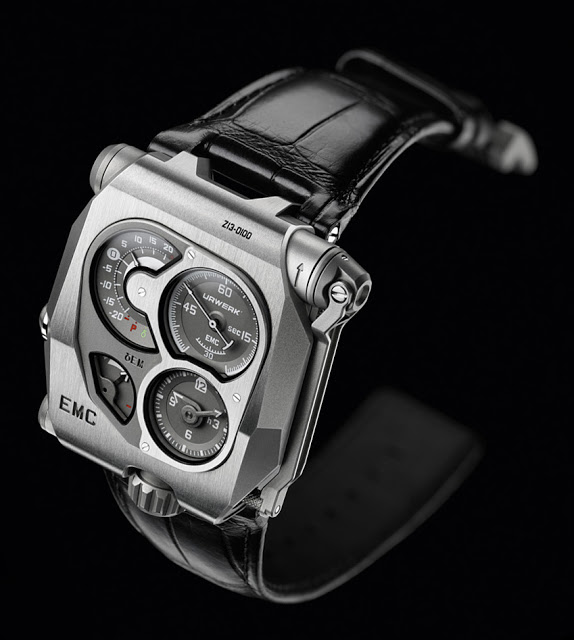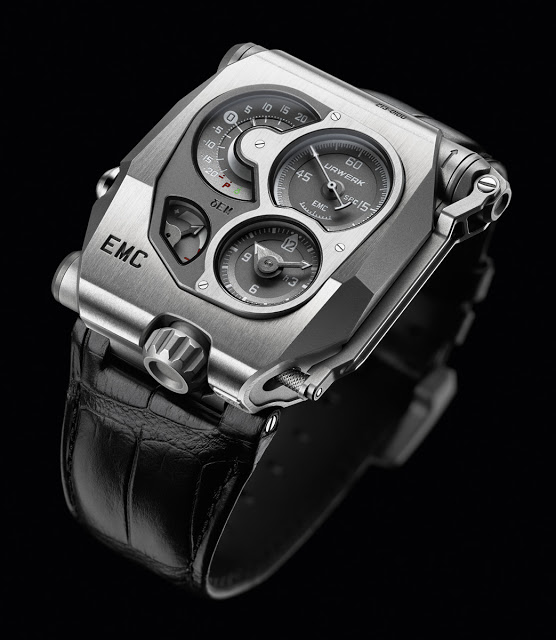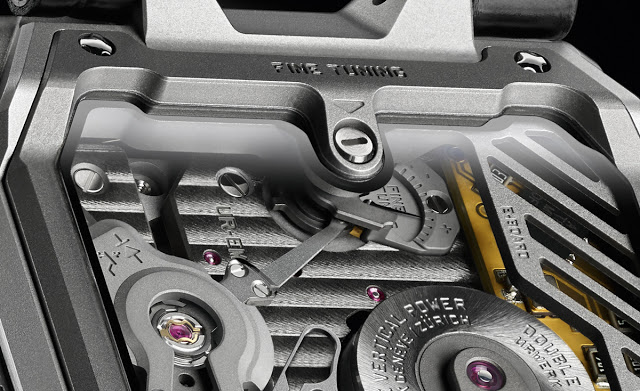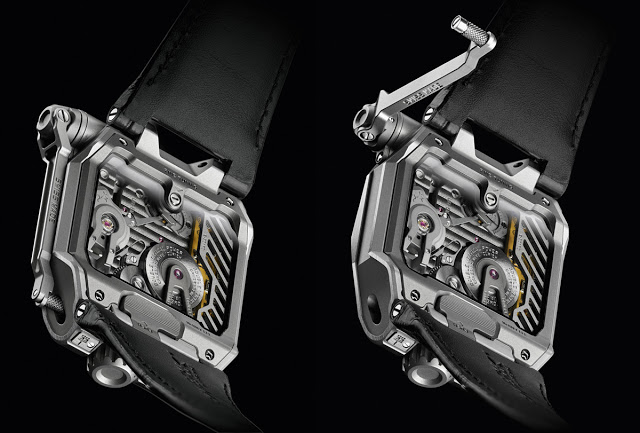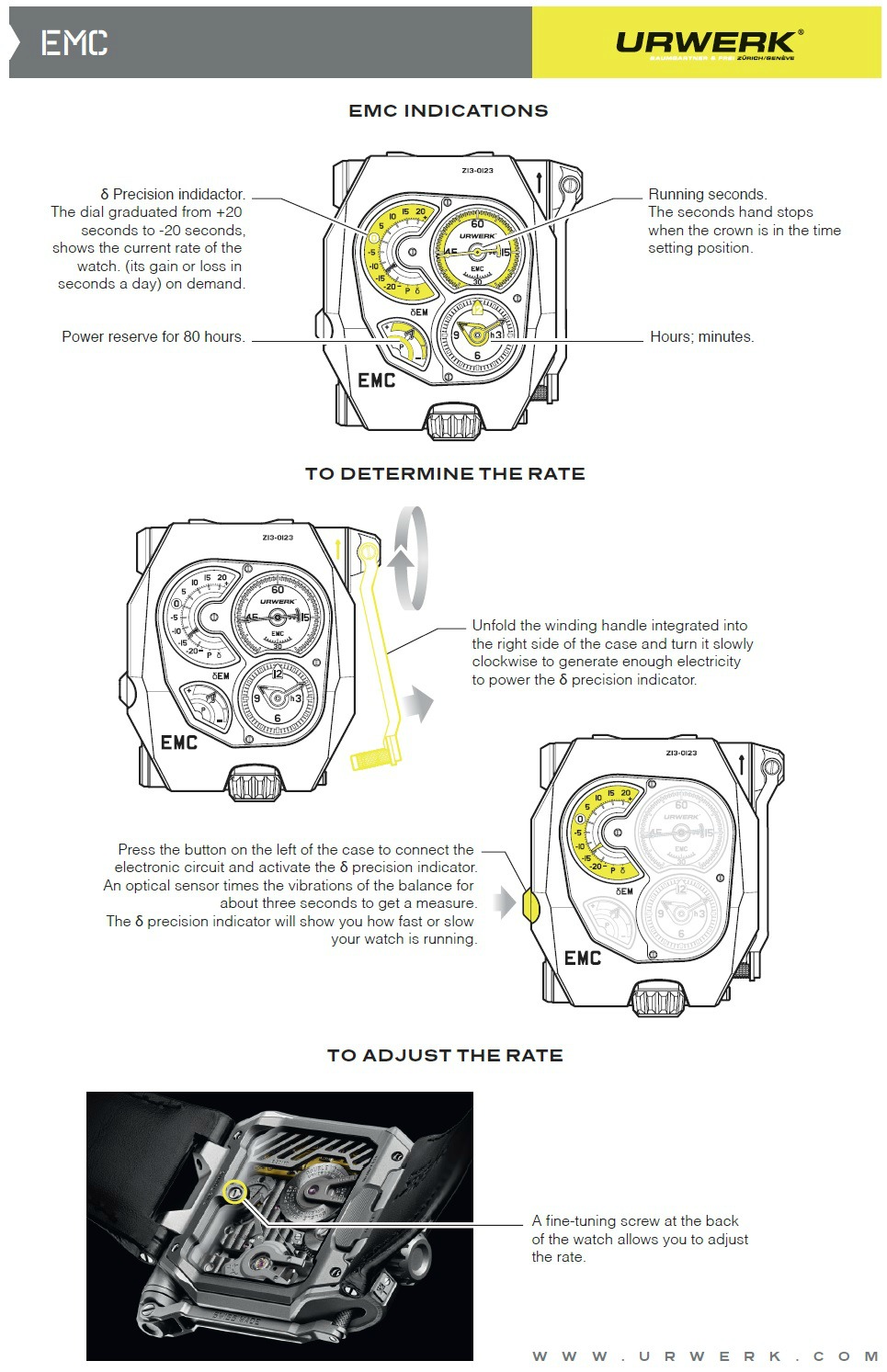By Meor Amri Meor Ayob
As explained in the title, this wristwatch is the first mechanical wristwatch which allows the user to regulate the watch. The EMC comes with a built-in electronic rate monitor as well as user regulation device.
At the top left is the rate variation display sub-dial, measured from -20 to +20 seconds. To its right is the constant seconds hand sub-dial, and below that the hours and minutes sub-dial. At the bottom left is the power reserve indicator sub-dial.
Meanwhile the large crown is at the South side of the watch case. In the picture you would also noticed the lever on the right side of the watch case that powers the rate measuring mechanism. At the moment it is in the “tuck-in” position.
The material used for the case is stainless steel front plate and a titanium back. Due to the large surface of steel used, the likelihood of scratching is substantial.
Relative to contemporary watches, its dimension of 43 mm wide by 51 mm long makes it a slightly larger on average. If you can carry a 42 mm wide dive watch on your wrist, this watch should not pose any problems for you.
The in-house EMC movement is visible through a display back and composed of two parts. The first is a hand-wound movement and the other is the rate measurement mechanism.
An integrated circuit, with an attached quartz oscillator which acts as a reference timekeeper, measures the actual rate variation of the movement against the quartz reference. The result is subsequently displayed on the rate variation sub-dial in front.
The whole movement is self-contained. The integrated circuit gets its electricity from a tiny kinetic energy generator powered by a hand-crank which can be folded out from the watch case.
The user first needs to turn the generator approximately a few times, which gives enough power for a few rate comparisons, and then press the button at the nine o’clock position. The rate variation will then be shown on the sub-dial. With that information, the user then turns a tiny screw on the back of the watch to speed up or slow down the rate.
As an engineering piece this tool is unique. The design is first class and I like the way it was made and presented. If money is not an option to me, I’ll get one.
However, I do question the practical use of such a complication. Such a solution is only useful if the mechanism is so complicated that slight changes in temperature, humidity, gravitational pull of the moon and sun etc. can have a profound impact on the accuracy.
If this is the case, would it be simpler to get a Seiko 5 automatic watch instead?


